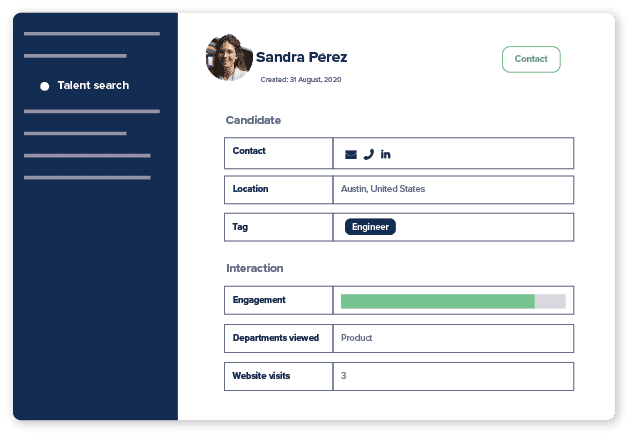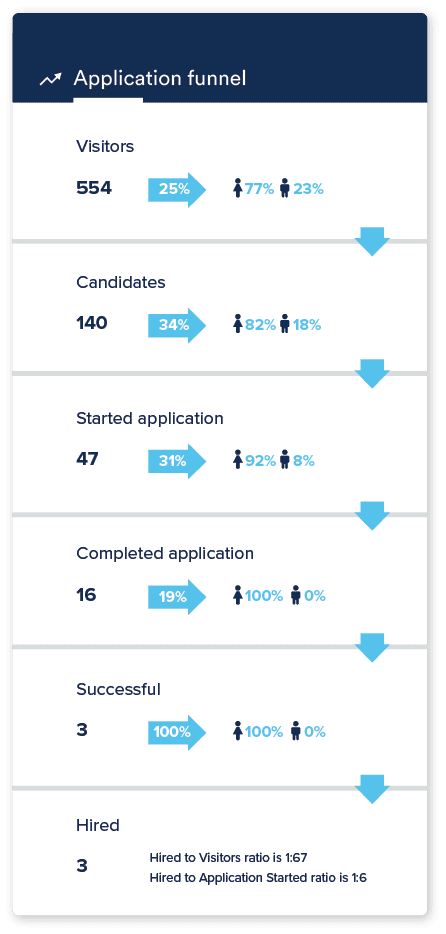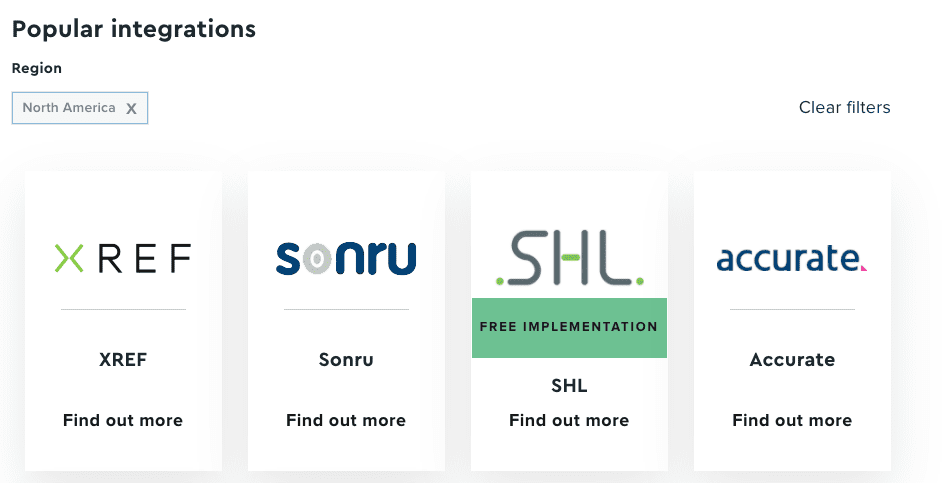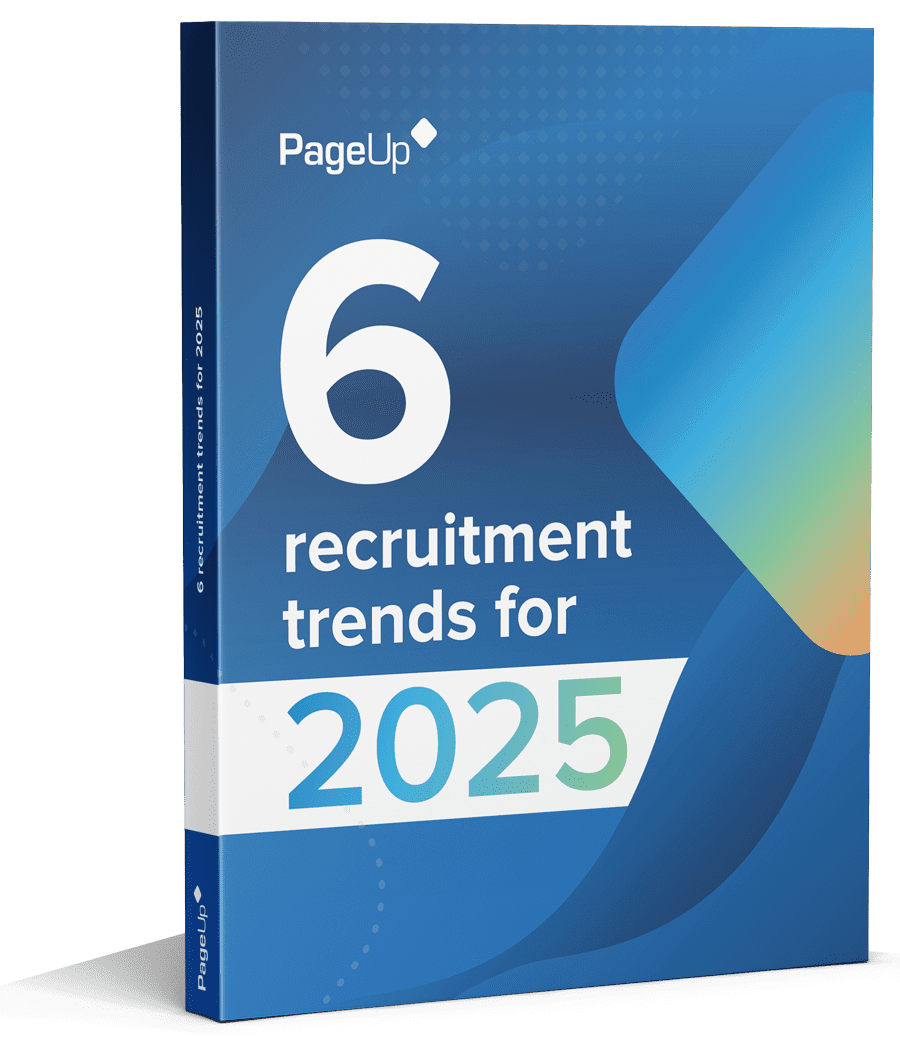With more recruitment software vendors to choose from than ever before, it’s not easy finding the right solution for your business.
Modern recruiters are expected to be in a million places at once. Job boards, company websites, social media, email. And there’s a smorgasbord of smart-sounding tools out there claiming to make a recruiter’s life easier.
Some platforms boast slick dashboards but lack functionality. Others are a nightmare to track candidates. Some even market themselves as automated while still requiring experienced recruitment professionals to do low-value manual work.
So it’s no surprise 4 out of 5 companies aren’t satisfied with their current provider.
But here’s the biggest problem: most recruitment software solutions are designed from the wrong perspective.
Why design philosophy matters
Software features are a big part of the story when selecting a vendor. But they’re not everything.
That’s right. Experiences that lead to better outcomes for candidates and hiring managers count just as much.
Still, too many recruitment software solutions are designed purely from the recruiter’s perspective. You only have to look at the actual business outcomes to understand why that’s a problem.
The best recruiting solutions ease the recruiter’s administrative burden while also taking the candidate’s and hiring manager’s experience into account.
Why?
Because it’s in everyone’s best interest.
- Candidates who receive straightforward and seamless experiences feel highly valued and exit the process with a positive view of the company.
- Hiring managers who are more involved in the recruitment process feel more satisfied and equipped to make decisions.
The best software should walk the line between delivering on the expectations of candidates in the sourcing and screening process – and aligning departments and business goals on the employer’s side.
Unfortunately, it can be tempting to overlook these outcomes in favourfavor of good branding and gimmicky features.
Throughout this guide, we’ll share valuable tips to improve hiring experiences across the board, and consequently, your business bottom line.
Pay for outcomes, not features
The key to selecting software that can deliver real value is to start with the problem and align the solution to specific business needs.
Then, consider true partnerships that support both the product and your team’s vision. If in doubt, dig a little deeper and ask the tough questions to determine whether a provider will actively support your team in the long term. (And whether that comes at an extra cost.)
Know your end goal
At the end of the day, what are you hoping to get out of your recruitment software? A reduced time to fill? Better quality hires?
If you know your end goal, it’s a lot easier to track your recruitment efforts at each step to ensure they lead to the results you’re aiming for.
So, what brings you here? Why are you in the market for a new recruitment system? Here are some of the top reasons businesses invest in recruitment software:
Improving quality of hire

The cost of a bad hire is more than most people think.
Aside from all the recruitment and onboarding costs, poor hiring decisions can be detrimental to an organisationorganization’s culture, productivity, engagement and brand.
Some managers hire in their own image. Others overlook essential soft skills in favourfavor of technical skills and credentials. But the problem isn’t a hiring team’s lack of judgment. It’s a lack of technology to make better-informed decisions.
In fact, 28% of bad hires are the result of a broken or limited hiring process.
Thankfully, there’s tech to empower more high-quality, suitable candidates to apply (and less of the wrong kind). And tools that help recruiters identify high-potential candidates and build stronger relationships with hiring managers across the organisationorganization.
Essential functionality for attracting and selecting better candidates:
- AI-powered dynamic careerscareer website content (jobs, blogs)
- Automated optimisationoptimization (accessibility, search engine, social media)
- Smart talent pipeline building
- Candidate engagement scoring
- Automated watch list
- Powerful talent search and rich categorisationcategorization
- Hiring manager interview and selection tools
Improving time to fill
If your goal is to increase hiring efficiency, you need tools that can help you find, identify and hire quality talent faster than your competitors.
According to the Society of Human Resource Management (SHRM), it takes a company 36 days on average to fill a role. And each vacancy costs around $500 per day.
Waiting until it’s too late isn’t just expensive business – it opens up the risk of losing qualified candidates to competing organisationsorganizations.
Smart tools help recruiters respond to updates quickly as candidates step through the application process. And useful dashboards give hiring teams the visibility and insights they need to move swiftly on key hiring decisions.
Essential functionality for finding the right fit faster:
- An engaging and dynamic careerscareer site
- Extended reach through industry leading job boards
- Recruitment workflow automation and analytics
- Smart talent pipeline building
- Pre-employment assessment
- Offer management
- Automated provisioning for new starters
- PersonalisedPersonalized onboarding and eLearning
Automating end-to-end talent acquisition

Today’s recruiters are feeling the pinch of fewer resources and an ever-increasing workload. And competition for talent isn’t going away.
Expectations are high and old methods that rely on manual processes, hunches and ‘gut feel’ aren’t delivering results like they used to.
Delve into the details and the business case to implement modern technology is strong. There’s an opportunity to work smarter (not just harder) at every stage of the recruitment funnel and job application process.
From recruitment marketing all the way through to onboarding software, technology can enable a seamless experience for recruiters, candidates, and hiring managers alike.
Essential functionality for automating the entire hiring process:
- Job posting automation
- Recruiting chatbot and 24/7 virtual assistants
- Workflow management and automation
- Automated candidate outreach
- Automated interview scheduling
- Integrated talent management
Improving the candidate experience
As we mentioned earlier, recruitment software (like an applicant tracking system) has helped ease a recruiter’s administrative burden for a long time. But candidates were often missing from the picture. And the ones that did make it through a company’s online application were forced to play the waiting game…only to be met with rejection.
63% of jobseekers would reject a job offer after receiving a bad candidate experience.
Talent acquisition teams need empathy for all applicants, not just those who are useful to them now.
Make no mistake: candidates left in the dark about their application status will share their poor experience with the world. And you can forget about contacting them for suitable roles in the future.
Today, digital tools can make meaningful human connections with high-touch candidate engagement. Recruiters can now automate fluid and timely communications behind the scenes.
It’s all thanks to modern candidate relationship management (CRM) software – enabling employers to build relationships with candidates throughout their recruitment journey.
Essential functionality for keeping candidates highly engaged:
- Easy-to-edit Content Management System (CMS)
- AI-powered dynamic website content
- Enhanced job description pages (embedding videos and blogs)
- Candidate relationship management (CRM)
- 1:1 candidate communications
- Automated assistance and text-to-apply
- PersonalisedPersonalized onboarding portal
- Job alerts and automated nurture campaigns
Managing applicant volumes

When the pressure heats up for recruiters handling high application volumes, they need scalable solutions that help them find the needle in the haystack.
Whether your organisationorganization is hiring for multiple roles or one really popular job, the best recruitment software makes it easier to visualisevisualize, assess and progress applications (without sacrificing the candidate experience).
Essential functionality for bulk recruitment tasks:
- Automated workflows
- Automated scoring
- Embedded assessments and video interviews
- End-to-end analytics
- Recruitment funnel analytics (candidate journey insights)
- CentralisedCentralized templated communication
- Calendar integration (direct interview sync)
Reducing hiring bias
There’s no secret sauce for building a diverse workforce. But there are plenty of tools every talent professional can use to remove unconscious bias and create more equitable conditions for candidates early on.
Whether it’s to remove bias in job descriptions, restructure referrals or source candidates from untapped talent pools – the barriers to diversity, equity and inclusion (DEI) will vary. It depends on industry, function, role and seniority.
Talent teams need relevant data insights to track demographics at each stage of the process, take action where it counts and measure outcomes.
Essential functionality for building high performing and diverse teams:
- Enhanced job description pages
- Campaign pages for underrepresented cohorts
- AnonymisedAnonymized profile screening
- Demographic analytics and reporting
- AI-powered behaviouralbehavioral screening
Abandoning multiple tech solutions for an all-in-one platform

Talent acquisition teams today must work proactively, optimisingoptimizing every step of the hiring process to drive the outcomes they need to be competitive.
They need platforms that provide deeper functionality and showcase their organisation’sorganization’s unique recruitment experience and brand.
The problem is that fragmented solutions don’t solve multiple business problems. (Not to mention the nightmare of team members losing access.)
But, there’s no magic bullet like many Enterprise Resource Management (ERP) solutions claim to be. In an ever-changing talent acquisition landscape, the best solutions are the ones that grow with you through 1-way or 2-way integrations.
Essential functionality for quality hires on a single-user interface:
Final thoughts
Many talent acquisition professionals make the mistake of upgrading their tech stack but never realiserealize the full value of their investment.
If you take one thing away from this article, remember that the easiest way to make a poor recruitment software choice is to not have a strategy. If you know which hiring outcomes you’re hoping to achieve, you’re way ahead of the curve and headed towards success.
What recruitment software solutions have (or haven’t) worked for you?
Good recruitment software is nothing without great customer service
At PageUp, we take a partnership approach to customer service – so you’ll always feel like you’re getting the most out of the system.
Unlike others, we listen carefully to our customers and offer real outcomes (not just the software) so that everyone can use PageUp to its full potential. With our deep functionality, configurable system, change management consulting, and dedicated ongoing support – it’s no wonder so many PageUp customers are Raving Fans.
We’d love to work closely with you to solve your team’s challenges. So reach out for a full demo of our modern talent acquisition platform today.
Fresh insights for HR
Stay up to date with HR trends, tips and more when you sign up for our industry newsletter





